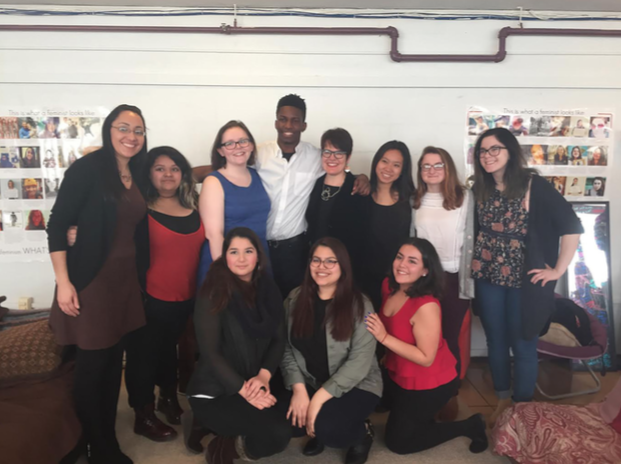 On Tuesday, March 8, only a couple of days before spring break, Connecticut College’s Women’s Center hosted an open house-style event in honor of International Women’s Day. Multiple senior administrator’s of the College attended the event, which was used as a time to highlight the work being done at the Center, as well as the work the Center’s staff still hoped to accomplish by the end of the year.
On Tuesday, March 8, only a couple of days before spring break, Connecticut College’s Women’s Center hosted an open house-style event in honor of International Women’s Day. Multiple senior administrator’s of the College attended the event, which was used as a time to highlight the work being done at the Center, as well as the work the Center’s staff still hoped to accomplish by the end of the year.
Jennifer Nival, Assistant Director of Unity House and the Women’s Center adviser, opened and introduced the event, saying that the purpose was to “cultivate connections” between the Center and the College community and administrators. Associate Dean of Institutional Equity and Inclusion B. Afeni McNeely Cobham introduced President Bergeron, who began her remarks by commenting on the history of the College as a place that would not exist without the activism of women from the Hartford College Club.
The club, which still exists and is active today, saw the need for a women’s college after Wesleyan Uni- versity stopped admitting women (because, explained a smiling President Bergeron, women were “killing it over there”), and helped to found Connecticut College for women. Connecticut College has been “looking forward ever since,” she added.
President Bergeron cited that only 25% of college and university presidents are women, and that pipelines are needed to increase this number, as well as a focus on increasing the numbers of women of color who lead colleges and universities. This need for “intersectional understand- ing,” said President Bergeron, referencing other important centers on campus such as Unity House and the LGBTQ Center, can especially be achieved through physical means. Currently located in the basement of Smith, President Bergeron discussed the potential for the Center to be moved to a different, more visible space on campus.
In the meantime, though, President Bergeron pledged to use her discretionary funds this coming summer to purchase new furniture for the space, a promise that elicited cheers from the students, faculty and staff who were in attendance. Student staff members of the Center took turns presenting on their work at the Center and why the space is so import- ant to them. Maritza Ortega ’17 showed a video she had produced about the center.
Giselle Olaquez ’19, who described herself as a first-generation, low income, Latina student, described the Center as a place for dialogue, friends, events and conversations. “It was here,” she said, “that I learned that I matter.” Hannah Johnston ’17, said that the Center has been a sanctuary for her, “the only place I don’t have to try to be something I’m not.”
Jermaine Doris ’19 and Fara Rodriquez ’16 both spoke to the concrete work the Center has done through its programming, such as the Black Rage event, which Doris specifically cited as an example of the inter-sectional work the Center partakes in.
Johnston and Doris, managers for the Center, both spoke to the Voice after the event in response to the pledge made by President Bergeron. Johnston called it “long overdue,” and as a sophomore with two more years at Conn, promised to make sure the changes come through. Doris echoed that, adding how happy he was to see the Center recognized and supported by the larger College community. •








